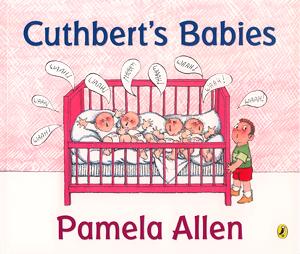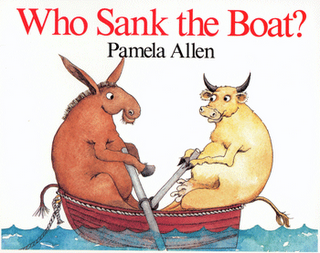"Is there anything worse than being forced to read bad books to children?" an acquaintance of mine asked the other day, as she hoisted yet another pile of Barbie books into her car at the library.
Her 7-year-old is obsessed with all things Barbie - books, dolls, movies, games, etcetera. This particular consignment represented the fifth week in a row that her child had selected nothing but Barbie books from the library.
I had observed them earlier in the children's section. "Mummy, look, MORE Barbie stories!" the 7-year-old proclaimed excitedly.
"Oh, great," said the mother weakly. "That's really
great, honey."
Slightly depressed pause. Then, a faintly pleading note in the mother's voice:
"Look over here, I've seen some Enid Blyton books! Why don't we get some of those, huh? I think you'd really like them!"
The girl shakes her head softly and regretfully. "Oh no, Mum," she explains, "I only have enough slots left on my card for these Barbie books. And I do want them,
all of them."
The mother's shoulders visibly sagged as she contemplated her fate. Her daughter is not yet reading independently, so those Barbie books in her girl's hands were books that THE PARENTS would be reading her, every single word of them.
Hence the mother's throwaway remark to me as we both loaded our cars with children, groceries and books. The question was rhetorical, but it started a train of thought in my head about the whole vexed question of bad children's literature, and parents' role (if any) in selecting or guiding reading choices for children.
My own daughters have lovely instinctive literary taste in some respects. They fell in love with Sandra Boynton and Winne the Pooh as toddlers, devoured Mem Fox, Pamela Allen, Lauren Child and a world of beautiful classic and modern picture books as preschoolers, were lost for a long time in a passionate devotion to Wind in the Willows, all thing Blyton, and Edith Nesbitt. They are now engaging with texts as diverse as
My Side of the Mountain, The Little White Horse, the Ramona books, Roald Dahl's many stories, Paul Jennings' tales and other great and varied books. Reading these stories to my girls, and watching the eldest (at almost 7, an avid and confident reader) read them herself and aloud to her sisters, has been purest delight for me.
However, not all my girls' choices have been so salubrious from my point of view. About a year ago they developed an interest in the Tiara Club books after one of them was given some for a birthday. Slightly later, they stumbled across the Daisy Meadows Rainbow Magic Fairy books (a franchise of well over 100 titles now, and still going strong). The eldest was recently waxing rhapsodical about yet another series, the Enchantia books or somesuch (I might have the title a bit wrong - they are about magical ballet shoes, in any event). Both my husband and I have perforce read a *lot* of these books aloud to the girls, and their interest shows no real signs of abating.
The thing is, these books are, I would contend, not enjoyable for adults to read. They are formulaic, and I *mean* formulaic, not in the traditional series sense of just "sticking to a theme / consistent characters" (think Famous Five, Nancy Drew, Trixie Belden et al). They essentially have the same plot in each book, with very minor changes of scenery or detail. The writing varies from pedestrian at best (for the fairy books) to downright turgid (the Tiara Club books, my personal least-favourites). The characters, where they are given any airtime at all, are flat and featureless. The language is tired. There are no surprises, no discoveries, no flights of fancy to capture the imagination. And in most of them, the moral messages are heavy-handed, overstated, and clunky. (I must be fair and say that this is less apparent with the fairy books than the others I'm talking about here).
Here's the thing, though - I don't like these books. I think they are boring, repetitive, poorly constructed, and fall way short of the magic that so much children's literature has to offer. I don't have a good time reading them to the girls, and yet I do it anyway, and so does my long-suffering husband (albeit with frequent insertions of Dad-sarcasm to leaven the experience).
Why do I read them despite thinking they are essentially bad books? Because the kids choose them, and choose them unequivocally. Because these repetitive formulaic texts have struck a chord with them, alongside the wonder and excitement they are finding in the classic old and new that they are also reading and choosing. Because when I say these books are bad, what I really mean is that,
in my literary judgement as an adult, they're not up to scratch - I'm not claiming they are unsuitable in content or approach, or unpalatable to children, in any way. (Clearly they are not the last, as evidenced by their wild success).
Allowing children to choose with as great a freedom as is consistent with their age and abilities is a central tenet of my overall parenting philosophy. Nowhere is it more important, I believe, than in the choice of reading material. Children's fascinations and motivations are their own, and often baffling to adults. The very repetitiveness of the plots has its own appeal for children, especially, I have noticed, for new readers (the fairy books helped my eldest make the leap from reader to confident reader, in fact).
The fact that these books do not appeal in any way *to me* does not render them valueless and does not mean I should direct my daughters away from them. After all, I read cosies - lightweight, low-gore mysteries - almost constantly, side-by-side with my more serious reading material. It would be difficult to argue (and I wouldn't so argue) that most cosies have any greater literary weight in the adult fiction scene than fairy books do for children. Yet they are comforting and enjoyable for me, and I relax when I read them.
So, for the foreseeable future, I think I'm resigned to the fact that I'll be reading books I don't greatly like to my daughters, alongside the pleasurable privilege of reading them wonderful, soaring children's books, both old and new. That's really OK with me. It takes all kinds to make a world ... in the literary sense as well as any other. And my girls' tastes will emerge as they read and are read different kinds of books and texts, and that's good too, it's as it should be.

































